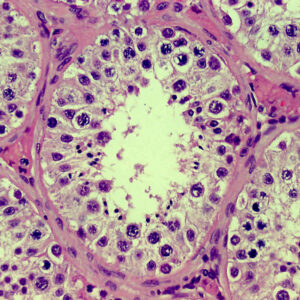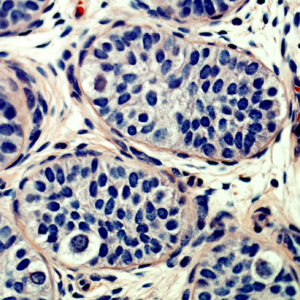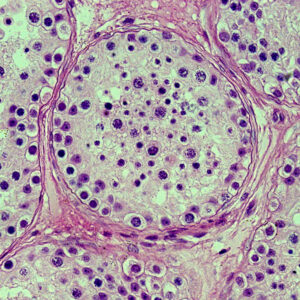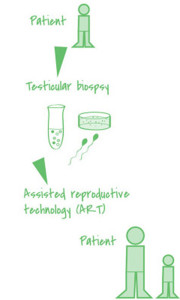[two_thirds]
What is fertility preservation?
Fertility preservation is the process of saving or protecting germ cells (eggs or sperm) so that a person can use them to have biological children in the future.
[/two_thirds] [one_third]

[/one_third]
[two_thirds]
Why is fertility preservation important
Certain types of cancer treatment, including chemotherapy or radiotherapy, can cause infertility. This is because the drugs or radiation that are used to target the fast-growing cancer cells can also target the sperm-producing cells which are known as spermatogonial stem cells. The infertility may be temporary or permanent and depends on the type and dose of cancer treatment you have received and your age. Cancer treatments are becoming more effective which means the rates of cancer survival are increasing leading to more focus on the potential side-effects of treatment such as infertility. While there are fertility preservation options available for some patients, for others, including young boys, there are no such options. This is why fertility preservation projects such as NORDFERTIL and their continued research are so important.
[/two_thirds] [one_third]


[/one_third]
[one_third]

[/one_third][two_thirds]
How does fertility preservation work?
Currently available methods for male fertility preservation focus on the cryopreservation (freezing) of sperm or testis tissue. For those who can produce a viable sperm sample, sperm freezing is the most effective method of preserving fertility. For individuals do not produce viable sperm in their ejaculate, for example those with azoospermia or young people who are unable to produce an ejaculate, testicular tissue freezing is an alternative approach. This is known as testicular tissue cryopreservation. Below we have summarised the different approaches for fertility preservation in males with a focus on young boys. We have included methods that are currently established in the clinics and those that are still undergoing research.
[/two_thirds]
FAQ
In addition to the research performed, NORDFERTIL will focus on the establishment of protocols for clinical applications. Therefore, the results obtained by evaluation of testicular biopsy material and cell culture experiments will be used to generate and/or optimize already existing protocols for clinical use in cooperation with all units included in NORDFERTIL.
The following questions will be addressed within the next years:
[one_third]
 [/one_third][two_thirds]
[/one_third][two_thirds]
-
- 1) Which are the best cryopreservation protocols as regards later differentiation of early male germ cells in vitro?
-
- 2) Which are the best strategies to monitor cancer cell contamination in vitro?
-
- 3) Which are the best strategies and culture conditions for human spermatogenesis in vitro?
-
- 4) Which clinical efficacy and safety measures should be monitored?
[two_thirds]